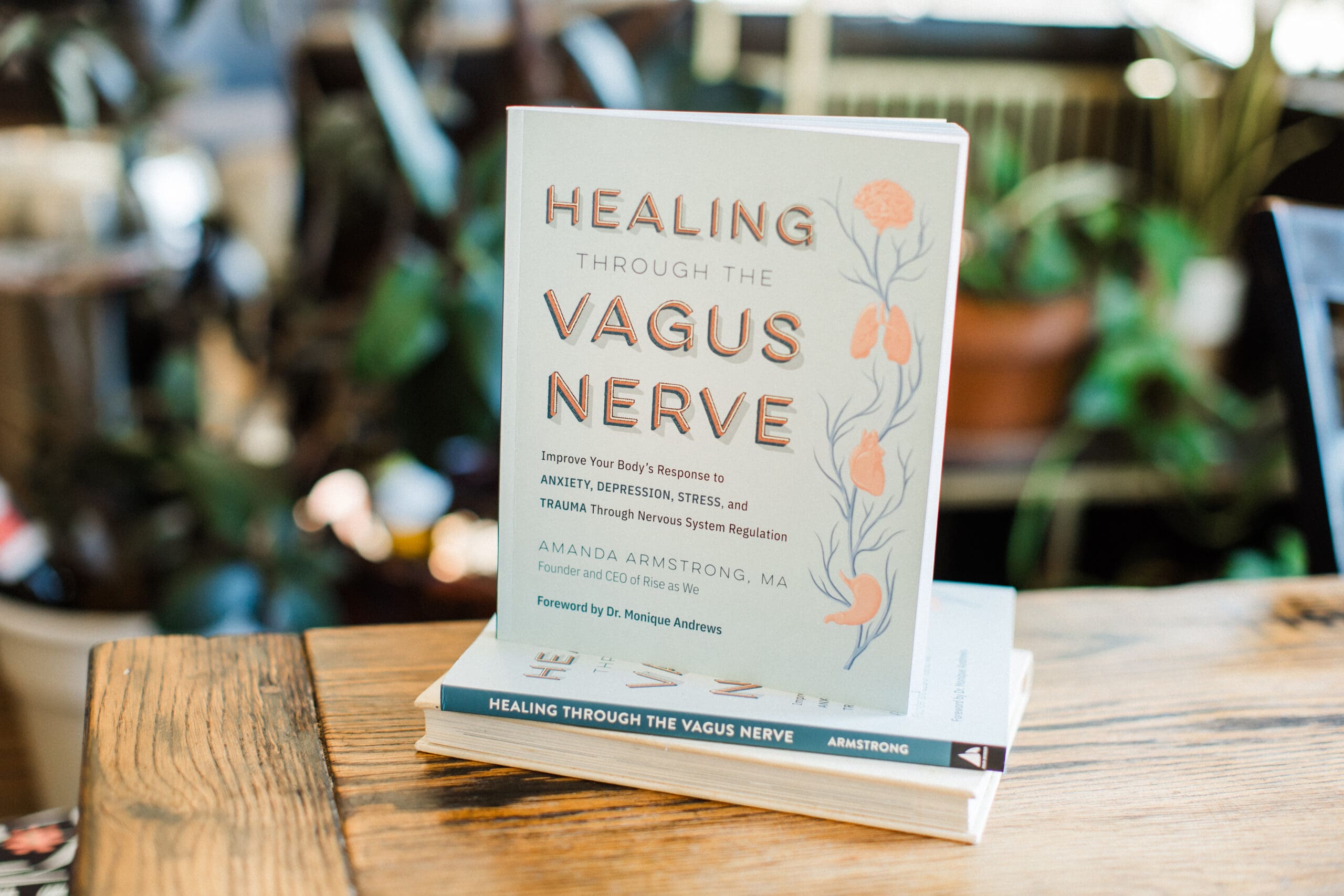What is the Vagus Nerve?
Episode 15: Spotify | Apple Podcasts | YouTube
View transcript on Buzzsprout
If your physical and mental health symptoms feel like a never-ending game of Whack-a-Mole, it might be time to look at your vagus nerve. In this episode, Amanda breaks down what the vagus nerve is, why it matters, and how improving your vagal tone can be a foundational shift in your healing journey.
What We Cover in This Episode
- What the vagus nerve is and why it matters
- The link between vagal tone and mental/physical health
- Signs of high vs. low vagal tone (and how to tell where you fall)
- Lifestyle factors that influence vagal tone
- Simple, research-backed practices to improve vagal tone
Understanding the Vagus Nerve and Vagal Tone
The vagus nerve is the 10th and longest cranial nerve, traveling from your brainstem down to your colon. It touches nearly every major organ along the way—and acts as a two-way communication superhighway between your brain and body.
What makes this nerve especially important in mental health and regulation work is that 80% of its signals travel from the body to the brain. That means your physiology heavily influences your psychology.
Translation: if you’re only using mindset work or talk therapy without engaging your body, you’re missing a massive piece of the puzzle.
High vs. Low Vagal Tone
We assess the health of the vagus nerve through something called vagal tone. High vagal tone means your vagus nerve is active and efficient—it supports emotional regulation, digestion, energy stability, and the ability to recover from stress. Low vagal tone can show up as anxiety, depression, gut issues, poor focus, and chronic fatigue.
Heart rate variability (HRV) is the most accurate way to measure vagal tone. Devices like the Oura Ring, Apple Watch, or an ECG sensor can track this. Higher HRV = better vagal tone. But even without data, your symptom patterns offer insight.
Common signs of high vagal tone:
- You rebound from stress quickly
- Your energy is stable throughout the day
- You digest food well
- You feel emotionally grounded and less reactive
Common signs of low vagal tone:
- Fatigue, brain fog, or hormonal issues are frequent
- You’re easily overwhelmed or reactive
- Digestion feels off
- You have mood swings, low motivation, or chronic anxiety/depression
What Lowers Vagal Tone?
While some factors like childhood stress or in utero conditions may be out of your control, many modern lifestyle elements actively work against vagal tone:
- Chronic stress or trauma
- Inflammation from diet or autoimmune conditions
- Poor sleep
- Sedentary habits
- Alcohol, cannabis, or medications (like antibiotics or Botox)
- Environmental stress (e.g., clutter, unsafe relationships, noise)
Want support actually implementing these practices? My monthly Release class is a live guided nervous system regulation session to help you turn theory into felt experience. I’d love for you to join!
What Improves Vagal Tone?
Improving vagal tone isn’t about hacks—it’s about repeated reps over time. Just like building muscle, this requires consistent practice and supportive habits. Here’s a non-exhaustive list of science-backed vagus nerve activators:
- Cold exposure (e.g., cold showers, ice face dunks)
- Diaphragmatic breathing (deep belly breathing)
- The “VU” breath (long vocal exhale while saying “VU”)
- Humming, singing, or gargling
- Ear and neck massage (targeting vagus-accessible areas)
- Exercise (especially consistent movement)
- Morning sunlight exposure
- Improving gut health (through food, probiotics, or digestion support)
Reframing Vagal Toning
One of the most important mindset shifts Amanda shares: you can’t hack your way to healing—but you can build capacity with simple daily reps. One practice, done consistently, is better than trying to master them all at once. Choose the one that feels easiest and start there.
Three Tangible Takeaways
- High Vagal Tone = Resilience. Improved vagal tone supports digestion, emotional regulation, energy stability, and stress recovery.
- Vagal Toning Is a Practice, Not a Hack. Repeated nervous system activation reps over time shift your baseline—not one-off tricks.
- Start with One Daily Rep. Pick one practice (gargling, humming, ear massage, etc.) and make it part of your daily rhythm.
Looking for more personalized support?
- Book a FREE discovery call for RESTORE, our 1:1 anxiety & depression coaching program (HSA/FSA eligible & includes comprehensive bloodwork)
- Join me inside the Regulated Living Membership, a mental health membership and nervous system healing space (sliding scale pricing available)
- Order my book, Healing Through the Vagus Nerve today!
- Download free resources here
*Want me to talk about something specific on the podcast? Let me know HERE.
Disclaimer: This article is for informational purposes only and is not a substitute for professional medical advice, diagnosis, or treatment. Always seek the advice of your physician or qualified mental health provider with any questions you may have regarding a medical condition.

Leave a Reply Cancel reply
A mental health newsletter that feels like a deep breath: simple, grounding, and here to remind you that healing is possible.
The Weekly Rewire
Navigate
Regulated Living provides neuroscience-backed mental health coaching to help you regulate your nervous system and reclaim your life from anxiety and depression.
Heal
Learn
Paragraph